How US sailors pulled off a daring high-seas mission to save a sinking Nazi submarine and capture its secrets
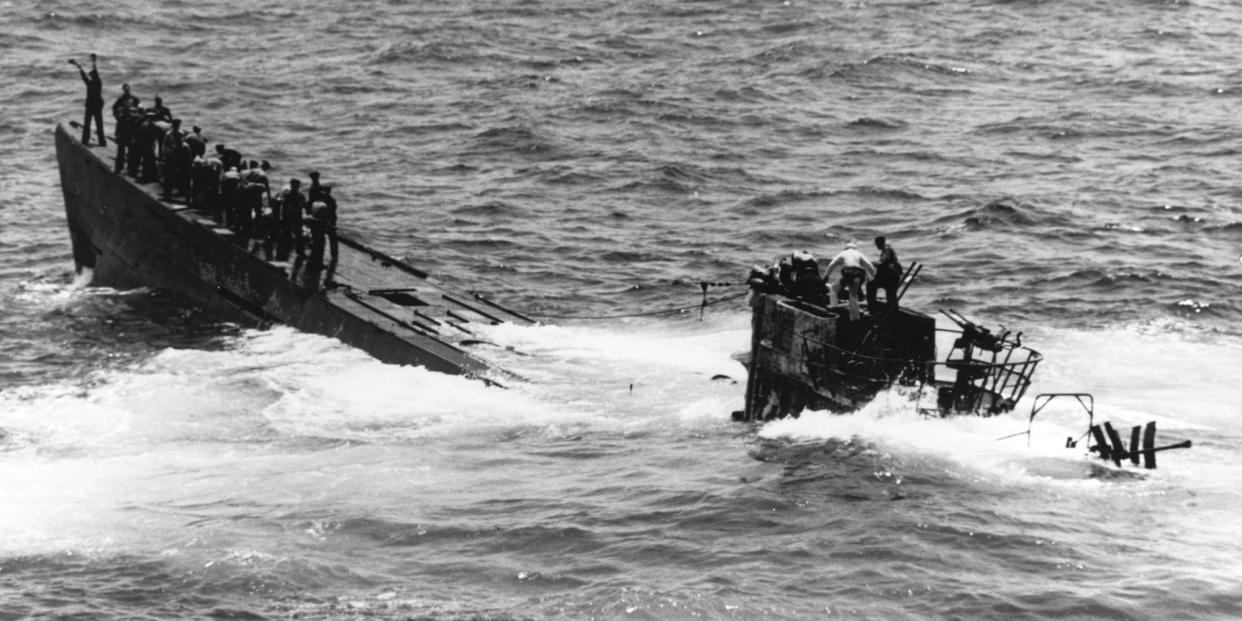
In June 1944, Allied militaries were preparing to cross the English Channel and invade France.
Hundreds of miles south, US Navy crews were preparing to land another kind of blow to the Nazis.
Capturing U-505 was an intelligence coup, yielding vital insight into German submarine operations.
In early June 1944, more than 100,000 Allied soldiers and thousands of ships and aircraft massed on the English coast, preparing for one of the most important battles in history: the invasion of Normandy.
Several hundred miles to the south, the six ships of US Navy Task Group 22.3 were on a rather routine U-boat hunter-killer patrol — a mundane mission in comparison.
After a few weeks at sea, the task force was heading to Casablanca to refuel. On the way, they pulled off one of the most impressive naval feats of the war: capturing the German U-boat U-505 completely intact — including its valuable Enigma machines and the codebooks needed to use them.
U-505

Roughly 250 feet long and displacing about 1,200 tons submerged, U-505 was a Type IXC U-boat with a crew of 60. It had six torpedo tubes to fire its 22 torpedoes, one 4-inch deck gun (which had been removed by 1944), and two anti-aircraft guns.
U-505 quickly earned a reputation for being unlucky. Its first deployment was repeatedly delayed by mechanical problems — a constant issue that cut many of its patrols short. Its first commanding officer had his tenure ended by appendicitis, and its second commanding officer had a mental breakdown during a depth-charge attack and killed himself.
Over 12 wartime patrols, U-505 only sank eight ships, including the accidental sinking of a Colombian diplomat's schooner, which contributed to that country declaring war on Germany in November 1943.
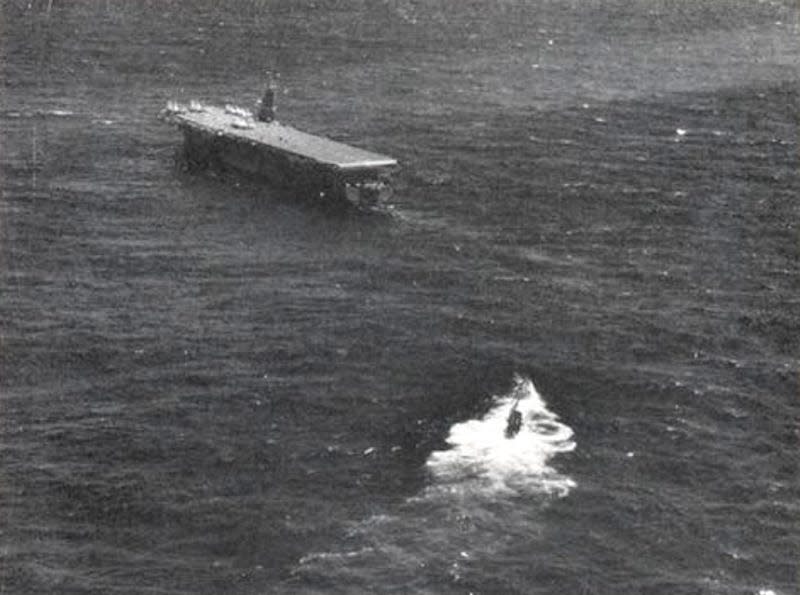
In summer 1944, U-505 was commanded by Oberleutnant zur See Harald Lange and operating in its usual hunting grounds off the West African coast.
Unfortunately for Lange, the German U-boat fleet's "happy times" were over. The Allies had cracked Germany's codes and were using intercepted messages to determine the general area and timing of U-boat operations.
The Allies sent hunter-killer groups with escort carriers and sonar on the offensive, but they still didn't know precisely where German subs would be because the subs' coordinates were encrypted using a newer version of the Enigma that the Allies hadn't gotten their hands on.
The capture

Task Group 22.3 sailed from Norfolk, Virginia, on May 15. It was commanded by Capt. Daniel Gallery, an anti-submarine-warfare pioneer, with the Casablanca-class escort carrier USS Guadalcanal in the lead and five destroyer escorts: USS Pillsbury, USS Pope, USS Flaherty, USS Chatelain, and USS Jenks.
On a previous anti-submarine patrol, Gallery had sunk U-515 and U-68 within 12 hours of each other, but he knew that capturing a German sub could be more valuable. He ordered the crews of Task Group 22.3 to train to capture a U-boat rather than sink it when they next had the chance.
Gallery was able to get the approximate location of U-505 from decrypted German transmissions, but after weeks of searching for the sub off of West Africa, the task group was running low on fuel and headed north for Casablanca.
Coincidentally, U-505 was also running low on fuel and had set a course for France.

At 11:09 a.m. on June 4, USS Chatelain reported possible sound contacts 150 miles off of what is now part of Western Sahara. Two F4F Wildcat fighter planes launched from Guadalcanal to investigate, while the destroyers Chatelain, Jenks, and Pope moved in.
U-505 was only about 60 feet deep, and Chatelain and the Wildcats discovered it almost simultaneously. The destroyers fired Hedgehog anti-submarine mortars and dropped over 60 depth charges, while the Wildcats fired their machine guns into the sea to mark U-505's course.
U-505 began taking on water, leading its crew to believe the hull was cracked and that they would soon sink. Lange ordered them to surface less than 800 yards from Chatelain and abandon ship.
Gallery then put his plan into action. All five destroyer escorts took position around the sub as it surfaced and sprayed it with small-caliber machine-gun fire, which wounded Lange, killed his chief officer, and panicked the crew.
A herculean effort
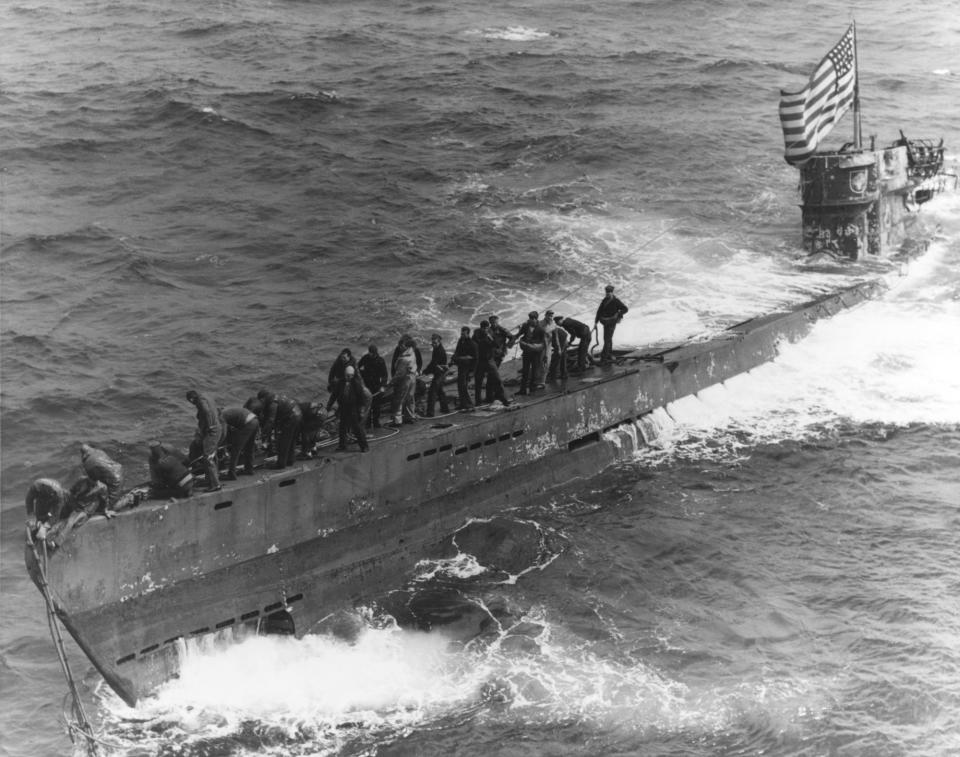
The destroyers ceased fire after two minutes, and the Germans hurriedly jumped into the water. They had opened scuttling valves to flood the sub but, in their haste to abandon ship, didn't set the scuttling charges correctly.
An eight-man boarding party from Pillsbury soon boarded U-505. As the F4F Wildcats fired into the water to keep the Germans from returning, the boarding party grabbed as many codebooks, documents, and maps as they could, along with the Enigma machine.
The US sailors then mounted a herculean effort to save U-505. With its rudder damaged and engine running, the sub sailed in a continuous right turn. They had closed the scuttling valves, but when the engine was disabled the sub sank faster, so they turned it back on.
Pillsbury tried to tow the sub but gave up because U-505 kept running into it, tearing a hole in the destroyer's hull. At one point over 90% of U-505 was underwater, with just its bow and conning tower above the surface.
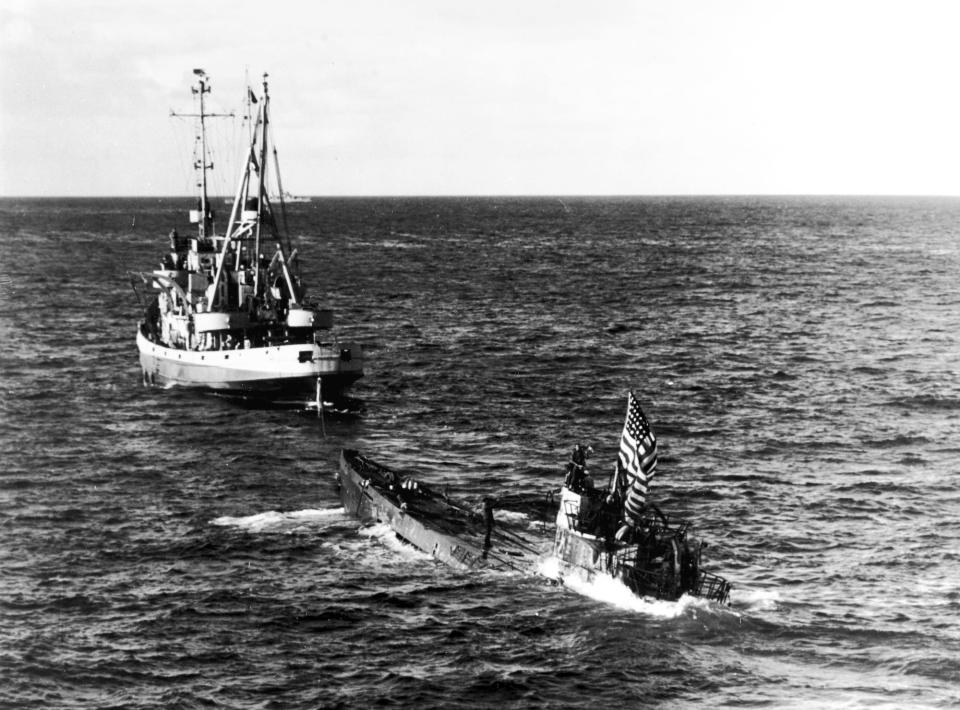
Fortunately for the Americans, a half-Polish member of the German crew named Ewald Felix agreed to help. Felix showed them how the bilge pumps worked, allowing them to pump water out of the sub.
The engine was disconnected, halting the sub's continuous right turn, and Guadalcanal took it under tow. Though the engine was off, the towing made the propellers spin, which charged the sub's battery and allowed the pumps to keep working.
With a large American flag flying over its German ensign, U-505 was now fully secured. It was the first time US Navy personnel boarded and captured an enemy warship since 1815, and one of only six German U-boats captured during the war.
Not everyone was happy — Adm. Ernest J. King, the chief of US naval operations, was initially furious, fearing the Germans would figure out what happened and change their codes — but the value of the sub soon became clear.
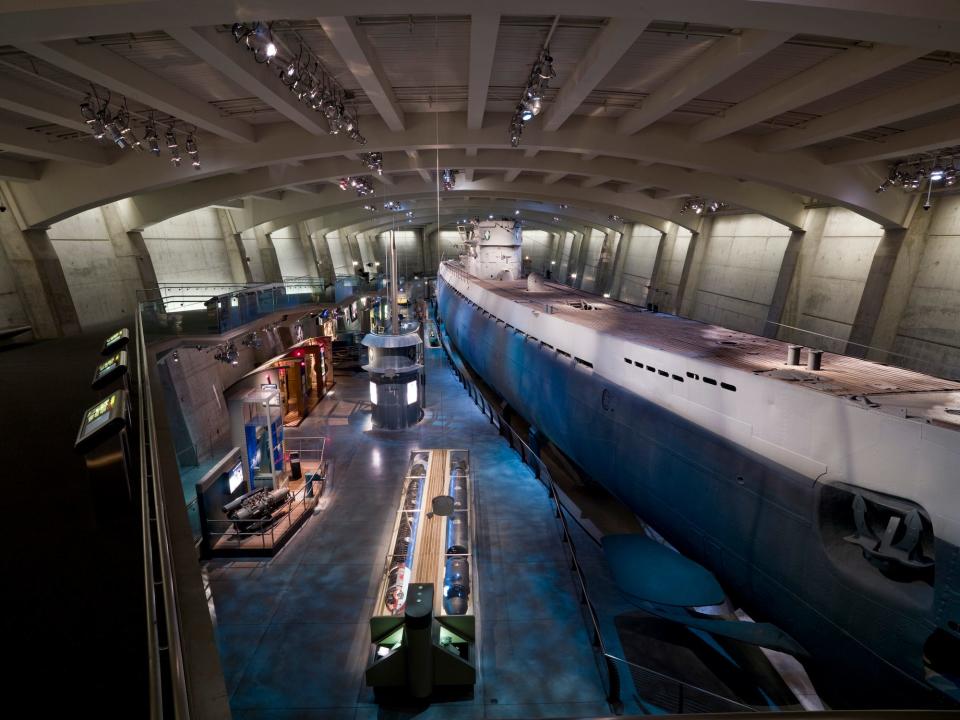
To keep news of U-505's capture from spreading, the sub was towed some 1,700 miles to Port Royal Bay in Bermuda, which, because it saw little military traffic, US officials believed likely had few if any German spies. The sub was also painted in US colors and renamed "USS Nemo."
The German crew, all but one of whom survived, was sent to Camp Ruston in Louisiana and held in isolation — a violation of the Geneva Conventions on the treatment of POWs.
U-505 yielded extremely valuable intelligence. Ten sacks full of codebooks, documents, and maps weighing over 900 pounds were recovered, as were two up-to-date Enigma machines and multiple acoustic torpedoes.
The sub's capture was kept secret until the war in Europe was over. It was then used as a prop to encourage war bond sales. U-505 was to be used for gunnery and torpedo practice after the war, but it was instead donated to the Museum of Science and Industry in Chicago in 1954, where it is still on display.
Read the original article on Business Insider

